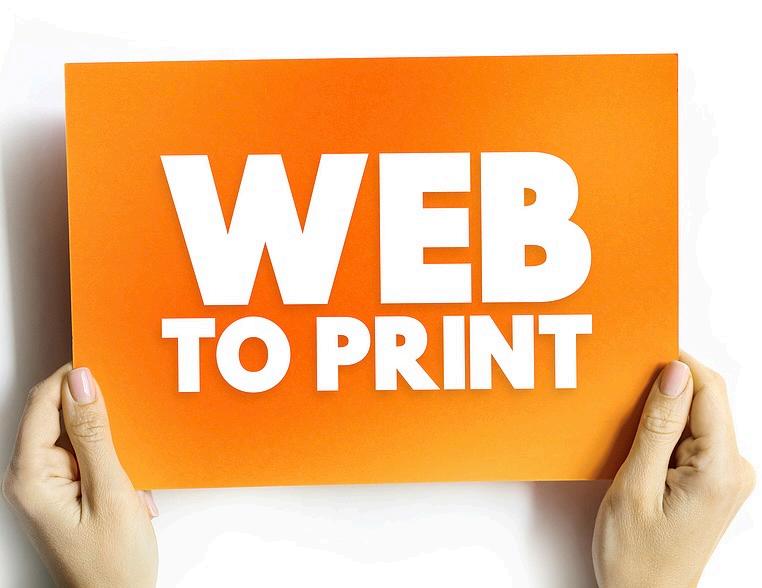
6 minute read
Right Cover, Wrong Book
When Print-on-Demand Sucks
You uploaded your Siles, Sixed any errors, approved your proofs, ordered author copies, waited three times longer than expected, only to have your book arrive with another author’s book bound inside your book cover. Ack!
Advertisement
It doesn’t happen often, but often enough that you’re probably able to Sind at least one social post a day complaining about this, or a similar production problem. Print-on-Demand (POD) strikes again.
Here's the thing, POD is probably the single most important process that makes self-publishing accessible and affordable to the majority of independent authors. As a whole, it’s an incredible resource, but there are drawbacks. The key to leveraging it successfully lies in understanding the process, and knowing where and how to make concessions that will allow for the successful printing of your books.
There are two primary printing processes used for printing books: Offset and Digital.
Offset presses are used for large volumes. They use printing plates to lay down different colors of ink (usually Cyan, Magenta, Yellow, and Black: CMYK) to create full color images and graphics. Sometimes these presses are sheet-fed, using large sheets of paper. Other times, a large, continuous roll is used and then trimmed down to large sheets. This is a labor-intensive and resource-heavy process. The additional costs associated with setting up an offset print job are distributed across the number of books produced.
In a purely hypothetical scenario, a job with $900 in setup costs for a run of 30 books is likely cost prohibitive—$900/30 = $30/book + the book cost. For a run of 3,000 books, the per unit cost is quite reasonable—$900/3,000 = $0.30/book + the book cost. Making a proSit on the former is nearly impossible, while the latter is quite achievable.
Of course, printing is not the only cost, nor is it the only factor. When contracting a large book run, you’ll also need to decide where to store those books and how to distribute them to fulSill orders. If you have the capital to invest and systems in place to address the logistical challenges, offset printing might be an excellent option. You’ll have more options and more control over the Sinal quality of your books.
Digital printing (POD) is like using your home ink jet printer, on a larger scale, and optimized for production. They are ideal for short runs (low volume). It does not rely on printing plates or large presses. As a result, it does not require the same degree of setup that offset requires. It allows printers to switch between jobs quickly and easily.
Digital printing doesn’t necessarily equate to lower quality, though in the world of POD publishing, paper quality and printing options are limited, and rapid production doesn’t lend itself to consistent quality control.

Because POD production is rapid, there are some issues that arise more frequently. For example, some, or all, of the interior pages may be incorrect, and binding and/or trimming may be catawampus, which leads us to how books are assembled.
Book pages are printed on large sheets, known as signatures. Multiple pages appear on each sheet, which are then folded, collected, bound, and Sinally, trimmed, to create your book. Depending on the printer, each signature will typically contain four to six pages, sometimes eight or 16.
On offset presses, signatures can contain as many as 32 pages. Slight shifts during binding and trimming are not uncommon. To account for these issues, printers deSine speciSications that will help ensure that nothing important is cut off, and that those minor shifts aren’t a major focus of your readers. These are your margins and safety areas. (They are essentially the same thing, with different terms.)

The term 'margin' is found more frequently in interiors, while covers often refer to 'safety areas'. Each of these refers to the amount of space between the trim edge and the important content. Most printers deSine a minimum requirement. This is the bare minimum space they feel is needed to reliably ensure is 'safe' during the production process. You can stick to the minimum, or you can give yourself a bit of wiggle room.
Increasing margins serves two purposes. The Sirst is to give the reader’s eye a bit of white space to use to better navigate the text on a page. The second is that when you increase the white (or blank) space at the edge of a design or page, if the trimming is offset or at a bit of an angle, it’s far less obvious to the reader. Another concession with POD is material quality. Each self-publishing platform has a limited variety of stock (paper) and color options. For text-only books, the offerings meet most needs. For books with graphics, either color or greyscale, there may be some challenges. Most of the stocks offered by selfpublishing platforms are relatively light, uncoated stock. White and crè me are the two most common paper color options.
Uncoated stocks tend to soak up ink, resulting in a softer, somewhat faded appearance. Graphics printed on coated stock are sharper and more vibrant. Unfortunately, coated stocks aren’t available on the most popular POD platforms, and are available in very limited trim sizes for global distribution.
Ink-heavy images printed on uncoated stock can bleed through to the other side of the page. Most printers set ink limits, and may Slag Siles for ink coverage limits to help mitigate this issue. That being said, the range for acceptable quality is about +/- 10%, so you might see up to a 20% difference between print runs.
While not critical for many authors, some really want extra options, like embossed covers with foil or spot UV treatments. In POD, those options are rarely available. The same is true for some binding types. The choices for covers are generally limited to one binding type, and matte or glossy cover stock.
One of the signiSicant endorsements for selfpublishing is the degree of control an author retains over their book. After the time, money, blood, sweat, and tears that you’ve invested, you expect perfection, right? In the POD world, perfection is not always achievable. Color is one factor over which we have very limited control. In the rest of the printing world, there are tools you can utilize to help ensure color accuracy and consistency. In POD, these are moving targets. Publishing platforms use printers across the country, sometimes around the world. The quality of printing can be impacted by things like temperature and humidity, the batch of paper, or a new supplier, ink quality, equipment, and operator aptitude, among other factors. Because there are so many variables, consistency and accuracy for short runs isn’t a high priority.

It is a time-consuming process that requires a lot of resources, on both the printer’s end, as well as the Sile creation end. Most home computers are not calibrated for accurate color. If you’re prooSing your cover or graphics at home, on an uncalibrated display, you’re already starting with an unknown. To produce accurate and consistent color, each piece of the process must be accounted for. In the POD world, we don’t have that option. This is where many authors and new-to-theindustry designers get frustrated. I’ve seen authors spend an incredible amount of time tweaking Siles and ordering proofs to get exactly the right colors, only to order the next run to Sind it signiSicantly different. Sometimes, I see them switch platforms to address the issue, only to Sind that the grass is not actually greener. This issue is inherent in POD. Switching platforms is not likely to resolve the issue, and certainly not over the long term.
Color is one area of self-publishing where authors need to accept that they don’t have full control, but the reality is that readers generally don’t notice it. They have no idea what the perfect color might be, and so they take it as it is.
Now, if you’re working on a coffee table photo book or one where color accuracy and consistency is very important, POD is the wrong space for you. Review your goals and resources and Sind an alternate option that will meet your needs.
There are a handful of other frustrations you might experience with POD. The laminate used for matte covers tends to peel. The glue used for binding isn’t always reliable. Wait times to receive your author copies can vary widely, and are impacted by peak production times and supply chain resources.
With all its inherent challenges, print-on-demand publishing is still an exceptional resource. By understanding the process and its limitations, you can leverage this tool to your advantage. Even in traditional publishing, you’ll see trim errors and color shifts. Take comfort in knowing that perfection doesn’t have to be the goal. Strive for excellence. The accessibility that this platform offers to voices previously unheard, is truly exceptional.
You’re invited to join the Professional Indie Publishing Roundtable. If you’d like to be part of the conversation with industry pros and other independent authors, join me for periodic virtual meetings each month. Be part of the conversation, ask questions, and share your experiences, challenges, and successes. Visit www.DeliberatePage.com/Roundtable to sign up for meeting access details and information.


